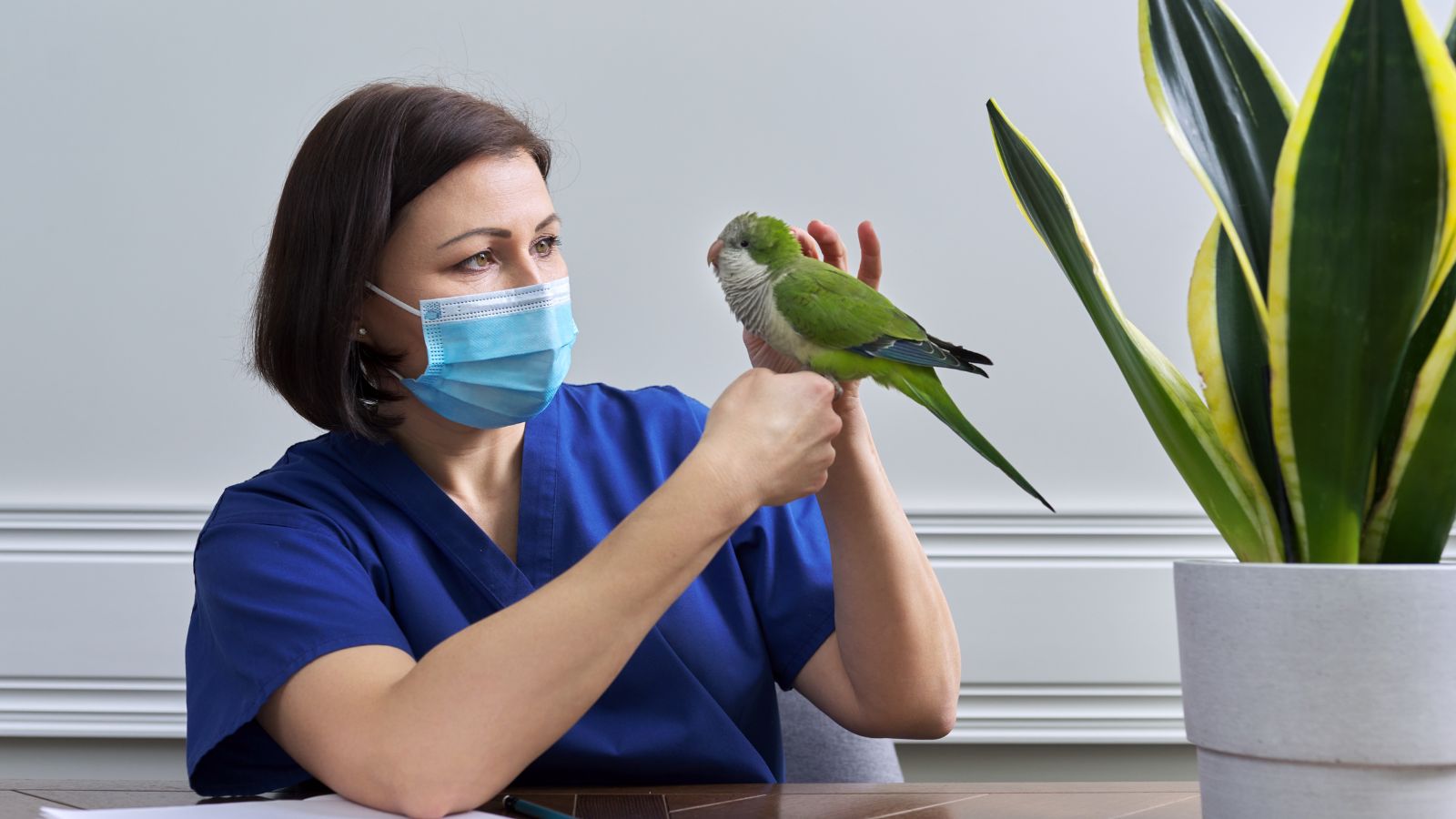While it’s almost never recommended to release any domestic animal into the wild, certain species are much more dangerous to let go of than others. This list reveals 17 pets we should never release into the wild.
Red-Eared Slider Turtles

While red-eared slider turtles can make good pets, they can pose a serious threat to other turtle species when released into the wild. They can also carry diseases that may negatively impact other animals. For this reason, it’s important that you never consider abandoning them in the wild.
Burmese Pythons

Burmese pythons are originally from Southeast Asia and are not designed to fit into ecosystems in other parts of the world. Unfortunately, they have now become a highly invasive species in some parts of the U.S., such as Florida. According to USGS, these snakes have caused a significant decline in species such as raccoons, bobcats, and opossums.
Lionfish

While lionfish make popular aquarium pets, their presence can be catastrophic when they’re released into non-native ocean waters. For example, because they have no natural predators in the Atlantic, their populations can grow out of control and compete with other native species.
European Starlings

European starlings are sweet little birds with an incredible vocal range. However, they’re not so cute when they’re aggressively competing with native birds for food, nesting sites, and other resources. They can also quickly grow in population size and damage nearby crops and agricultural areas.
Quaker Parrots

Quaker Parrots, also known as monk parakeets, are banned in some states because of how badly they can affect native animals and crops when released into the wild. They have a reputation for being highly adaptable, aggressive, and loud, making them both a nuisance and a danger to American ecosystems.
Goldfish

Goldfish may seem docile and harmless enough when they’re in your pond or fishbowl, but they can actually grow much larger in wild environments. When this happens, they can use up many of the resources needed for native species, often causing a decline in their numbers.
Koi Carp

Like goldfish, koi carp can have a significant negative impact on waterways and native species when released into the wild. They can grow to enormous sizes and live a very long time, meaning they consume a lot of food during their lifetimes. This can also make it harder to keep their population under control.
Ferrets

Ferrets are pretty cute and fuzzy to us humans, but they can be a real menace to local ecosystems. As vicious predators, they are a significant threat to wildlife, which is why, as mentioned by ETHOS Veterinary Health, it’s illegal l to release them into the wild in many states in the U.S.
Hedgehogs

Hedgehogs may look like adorable little spike balls, but they can be harmful to North American ecosystems. They prey on local insects and small animals, disrupting their populations. What’s more, they are known to commonly carry foot and mouth disease, which can spread to livestock and cause serious consequences.
Sugar Gliders

Sugar gliders are native to Australia and aren’t designed to cope with cold American regions. If you do release them, they’re likely to struggle to stay warm or find enough food, leading to significant suffering and death. They also pose a risk to other native species.
Green Iguanas

Green iguanas are incredible creatures but they don’t belong in non-native American states. In these areas, they can become very aggressive and territorial, damaging local flora and infrastructure. They can also outcompete with native species.
African Clawed Frogs

As the name suggests, African clawed frogs are native to sub-Saharan Africa. So while they make popular pets in other countries, it’s a bad idea to release them into the wild. They are known to reproduce quickly, compete with other species, and carry deadly chytrid fungi that can be harmful to local wildlife.
Giant African Land Snails

Giant African land snails are beautiful molluscs, so it’s no wonder that many Americans want to keep some of their own. However, it’s important that you don’t release them in the U.S. Due to reproducing very quickly, they can become a persistent invasive species that can carry rat lungworm and destroy local flora.
Domestic Cats

Domestic cats are one of the most popular pets in the U.S. According to Forbes, a whopping 29% of U.S. households owned cats in 2022. However, this doesn’t mean we should become complacent about how we handle them. When released into the wild, cats threaten many species of birds, mammals, and reptiles.
Domestic Dogs

Like cats, domestic dogs make extremely popular pets in the U.S. Sadly, some people end up abandoning them when they feel like they can no longer take care of them. As well as being harmful to the dog, doing this can put other species at risk of predation and disease.
Domestic Rabbits

Domestic rabbits are adorable little creatures, but they also have a reputation for reproducing like, well, rabbits. As their population grows, they can cause significant damage to native flora and compete with other species. Therefore, you should always try to rehome your rabbits rather than abandoning them in the wild.
Raccoons

While raccoons are native to North America, they can become invasive and harmful to other species when released in other regions. They’re highly adaptable and hardy, meaning they often grow quickly in number and can spread dangerous diseases, such as rabies and canine distemper, according to the National Institutes of Health.
Up Next: 17 Phrases Older People Use That No One Else Gets

Each and every generation has its own phrases and sayings that separate it from the rest, and the boomers certainly have plenty. Discover 17 popular boomer phrases that aren’t often used today and what they mean. Maybe you’ll want to bring some of them back!
17 Phrases Older People Use That No One Else Gets
People Who Don’t Show Empathy Usually Have These 18 Traits

The world would be a better place if everyone had a little more empathy. But sadly, in reality, some people show much less empathy than we’d like. Here are 18 traits of people who don’t show empathy.
People Who Don’t Show Empathy Usually Have These 18 Traits
The 17 Unhappiest States in America

The US has hit an all-time low position in the World Happiness Index, tumbling to 23rd in 2024. However, it’s important to remember that location is an important factor; many US states are very happy, unlike the following 17 US states that appear to be the most unhappy.
